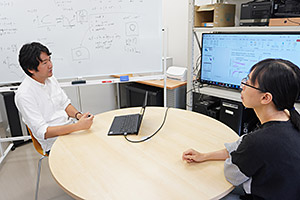

07/24/2023

Materials discovery and optimization increasingly involve “inverse design.” Using computational models, simulations, and machine learning algorithms, this approach works backwards—starting from the target properties—to determine the model that can reproduce the optimal atomic or molecular structure of a material.
Combined with the conventional forward methods, inverse design is expected both to accelerate discoveries, and to provide a clearer understanding of the property/structure relationship of materials.
A 2022 article by Lieu and Yoshinaga from AIMR illustrates the current progress in inverse design by formulating a patchy-particle system that can reproduce two-dimensional self-assembled structures, such as the kagome lattice or the dodecagonal quasicrystals1. Using a relative entropy-based machine-learning algorithm, the authors were able to determine the patches necessary for obtaining the desired target structures.
“This system created by inverse design has enabled us to interrogate specific aspects of self-assembly, such as the kinetic path of the structural formation of quasicrystals2,” says Yoshinaga. “Our next step is to use this system to investigate the effects of dynamic processes such as temperature and pressure changes, or time-dependent flow and deformations.”
Currently, the team is using reinforcement learning to study the temperature control of the self-assembled quasicrystal structures.
(Author: Patrick Han)
This research highlight has been approved by the authors of the original article and all information and data contained within has been provided by said authors.